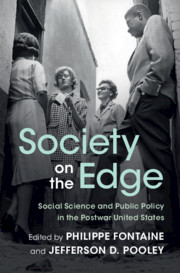6 - The Black Ghetto
Published online by Cambridge University Press: 28 November 2020
Summary
Chapter 6 addresses the “black ghetto”-the persistent concentration of African-American poverty in the country's inner cities. The interwar Chicago School's race-agnostic paradigm was challenged by a handful of high-profile sociologists and economists in the mid-1940s in works that, though they documented a discriminatory thicket, failed to win public or policy traction. Only with the televised urban riots of the mid- to late 1960s, in the midst of Johnson's Great Society, did the black ghetto attain full-fledged problem status. Social scientists registered the new stakes in a wave of studies that established the battle lines for decades. Works that stressed the spatially concentrated legacy of racial discrimination were pitted-in a highly charged political climate-against culture-of-poverty accounts. The research lines, in turn, informed competing remedies, notably geographic dispersal, community development, and-in a reflection of the country's rightward drift-outright disengagement. The broad if uneven patterns in the post-1960s scholarship are a de-emphasis of race, on the one hand, and the strengthening of individualistic frames, on the other. There is, moreover, a rough disciplinary divide: Sociologists, he shows, have tended to highlight spatial and social factors, with economists and political scientists favoring, for the most part, more individualist and class-based accounts.
Keywords
- Type
- Chapter
- Information
- Society on the EdgeSocial Science and Public Policy in the Postwar United States, pp. 224 - 257Publisher: Cambridge University PressPrint publication year: 2020



